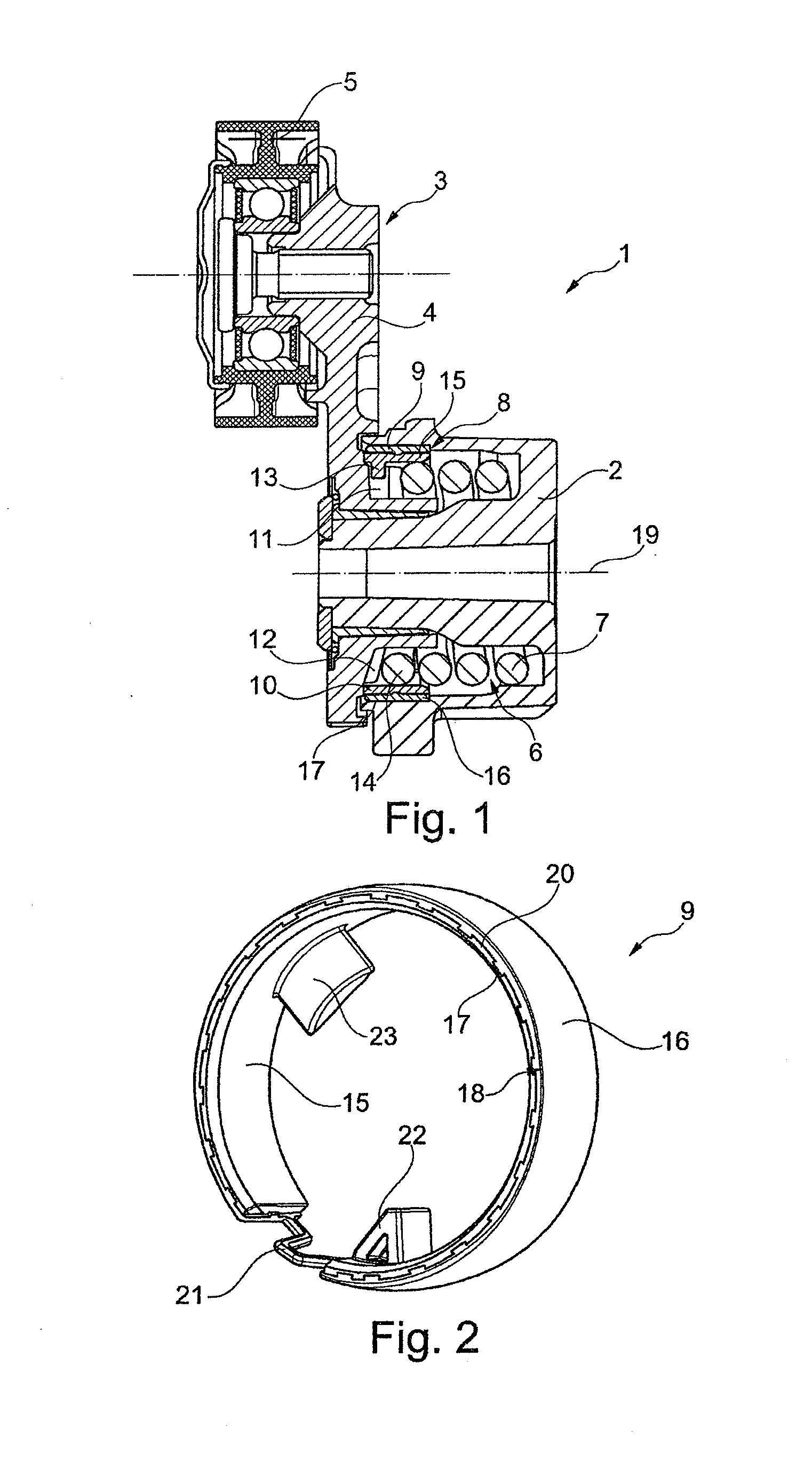Traction mechanism drive having a vibration damper
a technology of vibration damper and traction mechanism, which is applied in the direction of friction dampers, mechanical devices, belts/chains/gearrings, etc., can solve the problems of friction hysteresis, and achieve the effect of increasing the friction moment between the sliding element and the base part and being easy to inser
- Summary
- Abstract
- Description
- Claims
- Application Information
AI Technical Summary
Benefits of technology
Problems solved by technology
Method used
Image
Examples
Embodiment Construction
[0015]FIG. 1 shows a vibration damper 1 of a traction mechanism drive not shown in its entirety with a stationary base part 2 attached, for example, to a housing of the internal combustion engine and a rotary part 3 that can be displaced to a limited extent about the rotational axis 19 relative to this base part and is formed here as pivot arm 4 and has the tensioning roller 5 supported so that it can rotate relative to this arm. The tensioning roller 5 engages in the revolving element, for example, a belt, and sets its biasing and damps vibrations introduced into the traction mechanism drive through a pivoting of the pivot arm 4. A force compensating the tension of the revolving element is here applied between the base part 2 and the pivot arm 4 by an energy storage device 6 tensioned between these elements. This energy storage device is formed in the shown embodiment by a coil spring 7 that is tensioned by catch elements at one of its ends locked in rotation with the base part 2 a...
PUM
 Login to View More
Login to View More Abstract
Description
Claims
Application Information
 Login to View More
Login to View More - R&D
- Intellectual Property
- Life Sciences
- Materials
- Tech Scout
- Unparalleled Data Quality
- Higher Quality Content
- 60% Fewer Hallucinations
Browse by: Latest US Patents, China's latest patents, Technical Efficacy Thesaurus, Application Domain, Technology Topic, Popular Technical Reports.
© 2025 PatSnap. All rights reserved.Legal|Privacy policy|Modern Slavery Act Transparency Statement|Sitemap|About US| Contact US: help@patsnap.com


